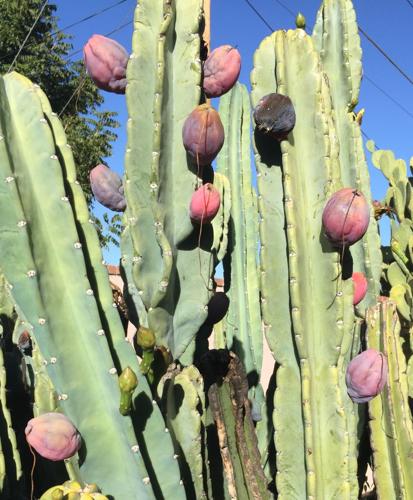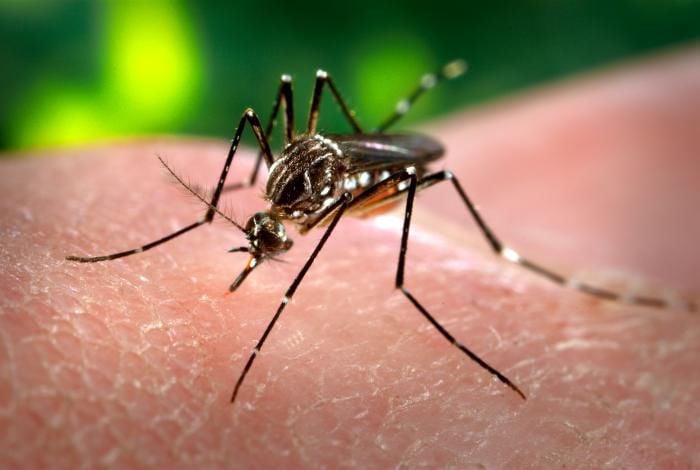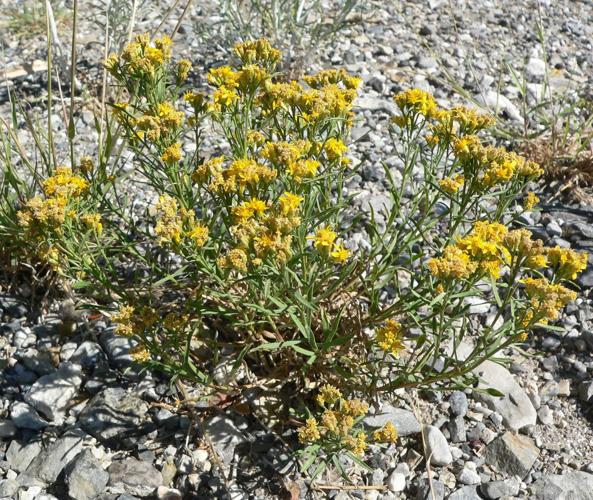Question: I have a sick orange tree. One side is doing somewhat well, but the other side is dying, and the leaves are curled up. There is no sign of insect infestation. I have to water the tree every four to five days, otherwise the leaves begin to shrivel. I think the tree is about 6 years old but could be more. Originally it was on a drip system, but I stopped that about a year ago and use a sprinkler spray.
Answer: The tree is old enough to be established in its current location. The sprinkler you are using is likely not delivering enough water and not deep enough. I recommend you adjust your irrigation schedule to deliver enough water to reach a depth of 36 inches at the drip line once every two weeks. You can still use the sprinkler but it will not be as efficient as a drip system. More is lost to evaporation when it is airborne. You can check the depth the water is reaching by using a soil probe. The simplest kind is a three-foot piece of rebar with a handle that you can push into the ground after irrigation. It will meet resistance when you hit dry soil.
This is not a question about plants, but I thought you might know the answer. We enjoy sitting on the patio but haven’t been able to for several weeks. The problem is we’re out there for just a few minutes, and then our ankles and feet start to itch like crazy. I have sprayed the deck, but that hasn’t seemed to help.
A: Mosquitoes are fairly common ankle biters this time of year. While there are landscape sprays you can use for short-term effect, I recommend you use an insect repellent on your legs to see if that stops or at least mitigates the problem. The most effective repellents are those that contain the active ingredient DEET.
What kind of cactus is this (pictured above, left), what are the fruits called, and are they edible?
A: It’s called Cereus repandus, the Peruvian apple cactus. It’s a South American species as you probably guessed from the name. It does well in our area except when we have a frost or freeze. The growing tips are damaged by below-freezing temperatures and need to be pruned as a result. In ideal locations protected from cold temperatures this plant may grow quite large. The fruit are edible and you may find birds, insects, and desert tortoises eating them as they ripen and fall to the ground.
When field mice eat the top tips of sweet potatoes (while still in the soil), are the tubers safe for home consumption?
A: While the practical me says just wash it off really well, I checked with our food safety microbiologist, and she says no way. The chewed part may not be the only part of the plant that the rodent touched. The problem is that the rodent may have touched its own feces or other rodent feces and if that gets anywhere on the produce, and it is not washed properly (with an actual sanitizer), it could harbor foodborne pathogens. My advice would be to put those veggies in the compost pile.
What is this pretty little weed plant (above, right)?
A: Your plant is called broom snakeweed (Gutierrezia sarothrae). It’s a native plant and regarded as a weed, especially where livestock graze, because it is poisonous.






